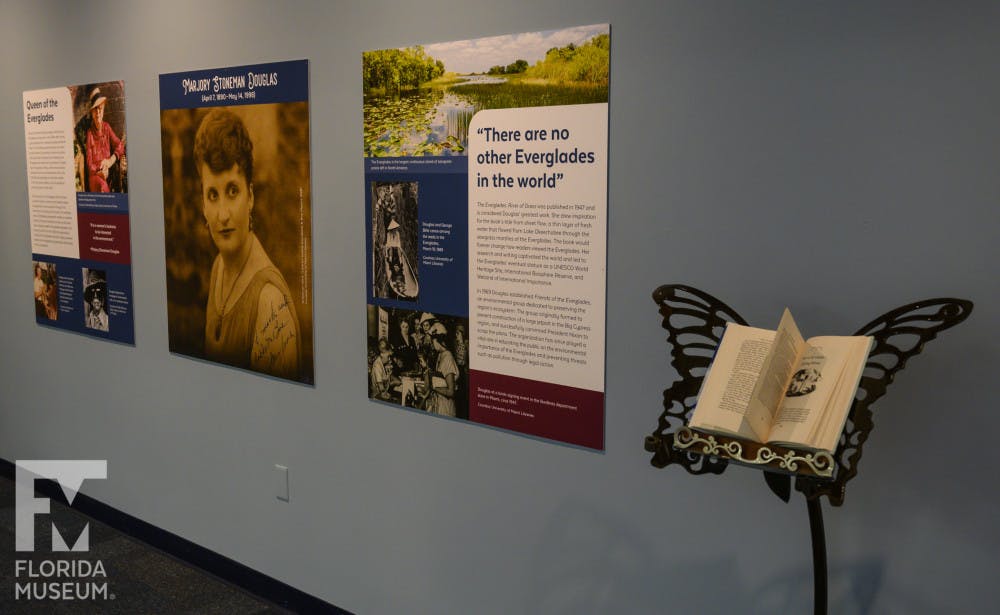A new exhibit has opened up in honor of women’s historical contributions to conserving the Everglades.
The new exhibit at the Florida Museum of Natural History, “Women of the Everglades: Activism and Conservation,” features three notable women who were involved in Everglades conservation efforts from 1880 to 1998: May Mann Jennings, Minnie Moore-Willson and Marjory Stoneman Douglas.
The exhibit includes dozens of historical images, Seminole dolls from museum collections, a copy of Douglas’ book “River of Grass” and replicas of postcards of Royal Palm State Park, Florida’s first state park, said Stephen Drury, museum security manager and the exhibit’s developer.
While all three women had the same goal, they had different reasons for their advocacy, he said.
Moore-Willson wanted to conserve the Everglades for Seminole Indians. Jennings, whom the residence hall Jennings Hall is named after, wanted to preserve Everglades tourism by advocating for the formation of Royal Palm State Park. Douglas wanted to protect the Everglades’ ecological diversity through publishing her book and forming the conservation group called Friends of the Everglades.
“The big idea of the exhibit is that there are so many different reasons for conservation of the Everglades,” Drury said.
After eight months of development, the exhibit opened Feb. 15 and will remain in the museum until the end of August. Drury said the timing of the exhibition is meant to coincide with the 100th anniversary of the ratification of the 19th Amendment that guarantees women in the United States the right to vote nationally in 1920. The anniversary date is Aug. 18, which is before the exhibit’s last day at the museum.
Abigail Ladwig-Conway, a 20-year-old UF history junior, said she is impressed by the exhibit’s focus on women’s advocacy. She said she was especially impressed because she has seen museums that focus on women’s efforts but fail to mention their other contributions.
“The fact they are going to highlight women who were just out here fighting for things they were passionate about is a great step forward,” Ladwin-Conway said. ”They weren’t just fighting for their fellow women, they were fighting for our environment.”
While the exhibit informs visitors about the women’s contributions to conservation in the past, Drury said their actions are still relevant today.
Drury said Douglas’ group, Friends of the Everglades, is still active, and Jennings’ work to form Royal Palm State Park led to the Everglades National Park, which holds 7,800 square miles of conserved land. He said these women are evidence that people who say one person can’t make a difference are wrong.
“These women really showed that that’s not the case, that with willpower and the right knowledge, anyone can achieve great things."
The “Women of the Everglades: Activism and Conservation” exhibit opened at museum Feb. 15.






